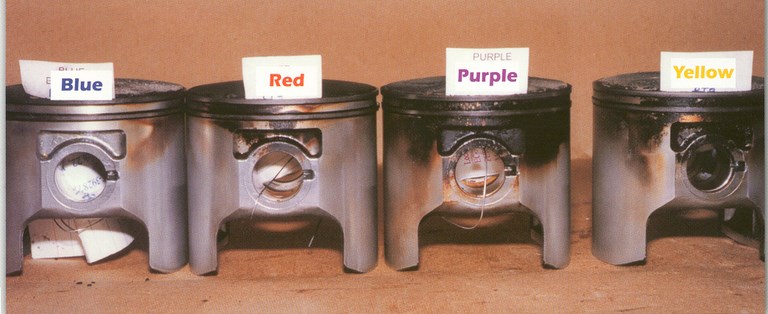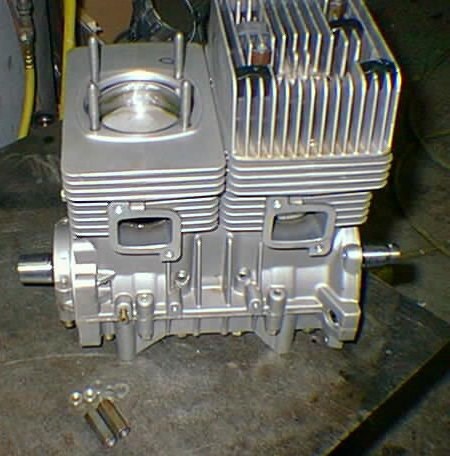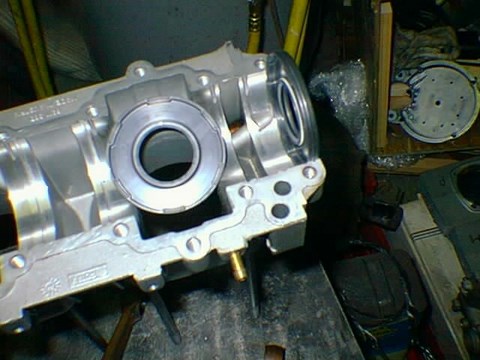Rotax 503 aircraft engine troubleshooting
Another reported problem with the 503 engine is in the breaking of the studs which are used to align the cylinders, and torque the heads. It has been reported that these studs have broken immediately above the bottom series of threads on the stud, or at the bottom of the top series of threads.
This then causes the head gasket to leak, with a resulting loss of power, and possible engine seizure. This could possibly be caused by over torquing, or vibration.
On the 503 engine a special spacing tool is used in there assembling of the engine crankshaft bearings onto the crankshaft. This too ensures the proper spacing between the two end bearings and the PTO end. This space is required in order for proper lubrication to reach the last bearing.
Another reported problem experienced by owners having engines rebuilt by mechanics unfamiliar with the Rotax engine is in the use of engine seals with single, rather than double sealing lips , and with improper spacing rings on the back of the seal.
If you engine is being rebuilt make sure to stress the fact to the mechanic that only Rotax supplied seals and gaskets be used.
Engines are a lot like people. If fed right, exercised right, and placed in a comfortable environment they tend to perform well. The environment that your engine is placed in plays an important role in the kind of performance it is capable of delivering to you.
The Rotax engine crankcase temperature must not reach 185 degrees F. If it does the engine may tend to "hyper ventilate". Meaning the engine runs very erratic, does not pull full rpm or runs on (four strokes) when shut off.
Images courtesy of www.trikite.com
next issue we will cover the 532/582 Liquid cooled engine, and the Rotax gear box.
The airflow around your engine installation should be such that the airflow keeps the temperature inside the engine cowling well below this temperature. With the recommended area allowed for air to exit the cowling being 3 times that of the air access area.
Well that just about does it for problems associated with the air-cooled Rotax engines, next issue we will cover the 532/582 Liquid cooled engine, and the Rotax gear box.

Two stroke engine oil, 2 stroke engine oil test, testing results for two stroke aircraft engine oil.
The type of two stroke oil you use in your ultralight aircraft engine DOES make a difference! When Pennzoil-Quaker State Company decided to upgrade its popular Pennzoil, Outboard and Multi-Purpose Two-Cycle Oil formulation, they felt it was necessary to look at all niche markets the product was used in to be sure the changes would be beneficial for the end user.
Because of the popularity of Pennzoil products in the sport aviation market, it was imperative that the product upgrade be tested in two- cycle sport aviation engines.
So, they teamed up with Rotax engine experts, Lockwood Aviation in Sebring, Florida, to design a test that would assure the new product would continue to protect these engines.
Four different oils were chosen for the test. The oils tested were:
1) Pennzoil" Two-Cycle Air-Cooled Engine Oil;
2) Pennzoil' Premium Out- board and Multi-purpose Two Cycle Oil;
3) A conventional petroleum two-cycle oil; and
4) A two-cycle synthetic oil.
For more information click here.


